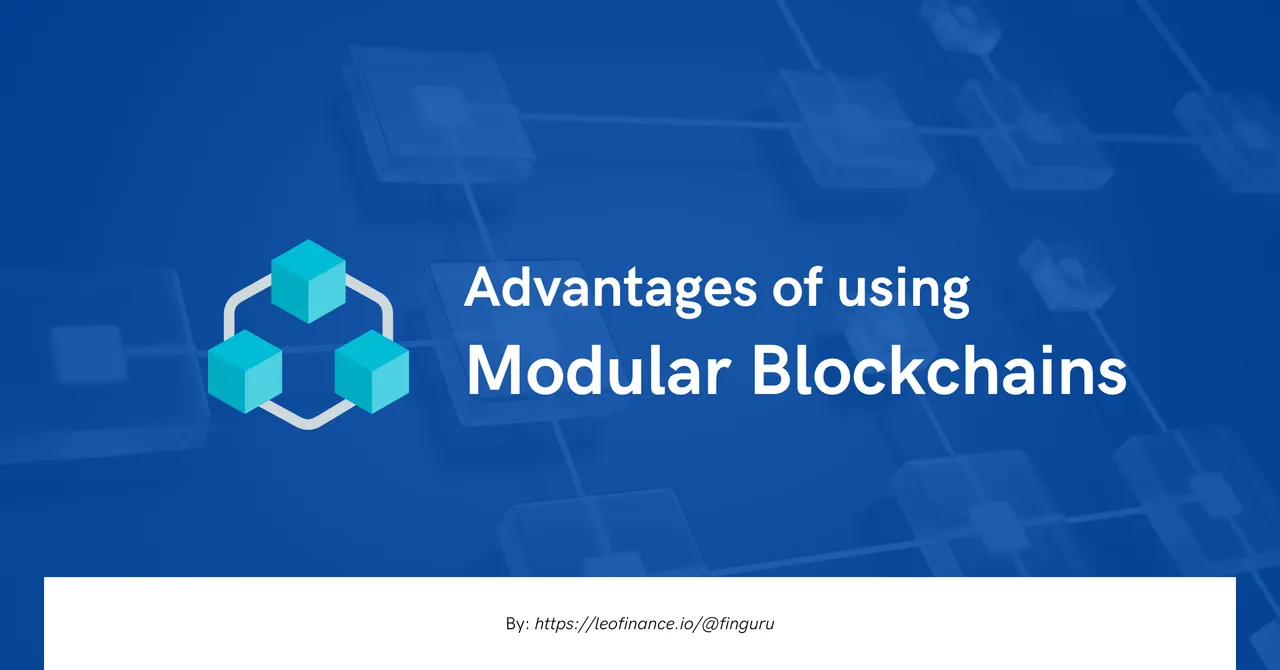
Introduction
A modular blockchain is a blockchain that can be changed by adding or removing modules to change its functionality. Modules can be added or removed at any time, which makes modular blockchains highly flexible.
They are the basic building blocks of modular blockchains, and they make it possible to adapt the technology to different use cases and objectives.
Modular blockchains consist of modules that perform specific functions: they can be used as smart contracts, storage solutions or scalability solutions.
Advantaged of Modular Blockchains
Modular blockchains are a better option for DApps in the long run because they have several key advantages over Monolithic blockchains:
Flexibility: Since the different components of the blockchain can be swapped out and customized, it allows for a greater degree of flexibility in terms of the types of applications that can be built on top of the blockchain. This is particularly useful in industries where there is a need for a high degree of customization, such as in supply chain management or the financial sector.
Scalability: Because different components can be added or removed as needed, it allows for a more scalable solution compared to traditional, monolithic blockchains. This is particularly important as more and more businesses and organizations begin to adopt blockchain technology, as the ability to easily scale the technology will be crucial in meeting the growing demand.
Security: Modular blockchain tends to be more secure than traditional, monolithic blockchains. Because the various components of the blockchain can be independently audited and tested, it can help to ensure the overall security of the system. This is important as security is a major concern for many organizations that are considering adopting blockchain technology.
Innovation: Another potential benefit of modular blockchains is that they can facilitate the development of new and innovative applications. Since each module can be developed independently, it is easier for developers to create new modules that can be used to build unique and useful applications. This can help to drive the growth and adoption of blockchain technology, as more and more people are able to use it to solve real-world problems.
What Are The Drawbacks?
One of the main challenges with modular blockchains is the potential for complexity. Because the various components of the blockchain can be customized and swapped out, it can make the overall system more complex and difficult to understand.
This can make it more challenging for developers to build applications on top of the blockchain, and it can also make it more difficult for users to understand how the technology works.
Conclusion
Despite these challenges, modular blockchains have the potential to be a major advancement in the world of blockchain technology. Because of their flexibility, scalability, and security, they have the potential to be applied to a wide range of different use cases. As technology continues to evolve and mature, we can expect to see more and more organizations adopting modular blockchains in order to take advantage of their unique benefits.